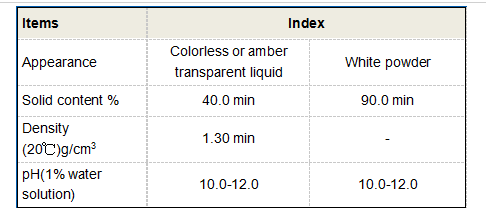poly aluminium chloride in wastewater treatment
Poly Aluminium Chloride in Wastewater Treatment
Poly Aluminium Chloride (PAC) is a widely used coagulant in the field of wastewater treatment. It is composed of numerous aluminum hydroxide and chloride complexes, which provide an effective means of removing suspended solids and organic impurities from water. The increasing demand for clean and safe water has led to an expanded application of PAC in various water treatment processes.
One of the primary advantages of using PAC over traditional coagulants, such as aluminum sulfate, is its higher rate of coagulation and flocculation. PAC can work effectively across a wide pH range, making it suitable for various types of wastewater. This versatility enables wastewater treatment facilities to achieve better water quality in shorter processing times. Additionally, PAC exhibits lower sludge volume compared to conventional coagulants, allowing for more efficient handling and disposal of the resulting sludge.
The mechanism of PAC involves the neutralization of charge on suspended particles in the water, which leads to the formation of larger flocs. These flocs can then be easily removed through sedimentation or filtration. PAC is particularly effective in treating wastewater containing organic matter, color, and turbidity. As a result, it is widely employed in municipal wastewater treatment plants, industrial effluent treatment, and even in drinking water purification processes.
poly aluminium chloride in wastewater treatment

Moreover, PAC significantly improves the removal of heavy metals from wastewater, making it an essential component for industries that discharge metal-laden effluents. By enhancing the coagulation process, PAC can help meet stringent regulatory standards for heavy metal concentrations in discharged water. This characteristic is particularly crucial for industries such as mining, electroplating, and textiles, where heavy metal contamination is a significant concern.
The use of PAC is also viewed as a more environmentally friendly option in wastewater treatment. Traditional coagulants often lead to the formation of more toxic sludge that can complicate further treatment processes. In contrast, the use of PAC results in a more manageable sludge that can often be treated further or disposed of with less environmental impact. Moreover, PAC is typically less corrosive than aluminum sulfate, reducing wear and tear on treatment facility equipment.
In conclusion, Poly Aluminium Chloride represents a significant advancement in wastewater treatment technology. Its efficiency, versatility, and environmental benefits make it an ideal choice for treating a variety of wastewater types. As the focus on sustainable and effective water treatment solutions continues to grow, the application of PAC will likely expand, paving the way for cleaner water and healthier ecosystems. The continued research and innovation surrounding PAC formulations and applications will further enhance its role in addressing the critical challenges of wastewater management and ensuring safe water for all.
-
Water Treatment with Flocculant Water TreatmentNewsJun.12,2025
-
Polymaleic AnhydrideNewsJun.12,2025
-
Polyaspartic AcidNewsJun.12,2025
-
Enhance Industrial Processes with IsothiazolinonesNewsJun.12,2025
-
Enhance Industrial Processes with PBTCA SolutionsNewsJun.12,2025
-
Dodecyldimethylbenzylammonium Chloride SolutionsNewsJun.12,2025





